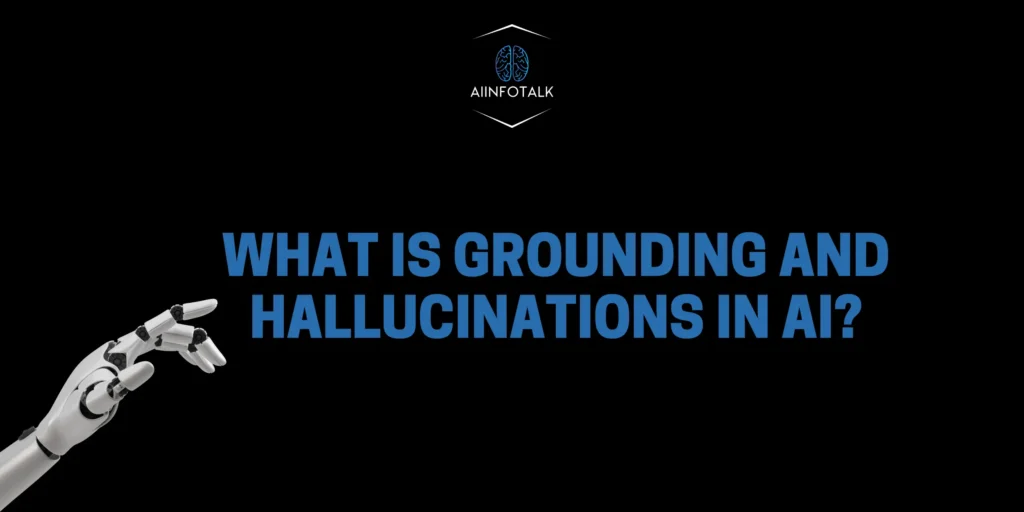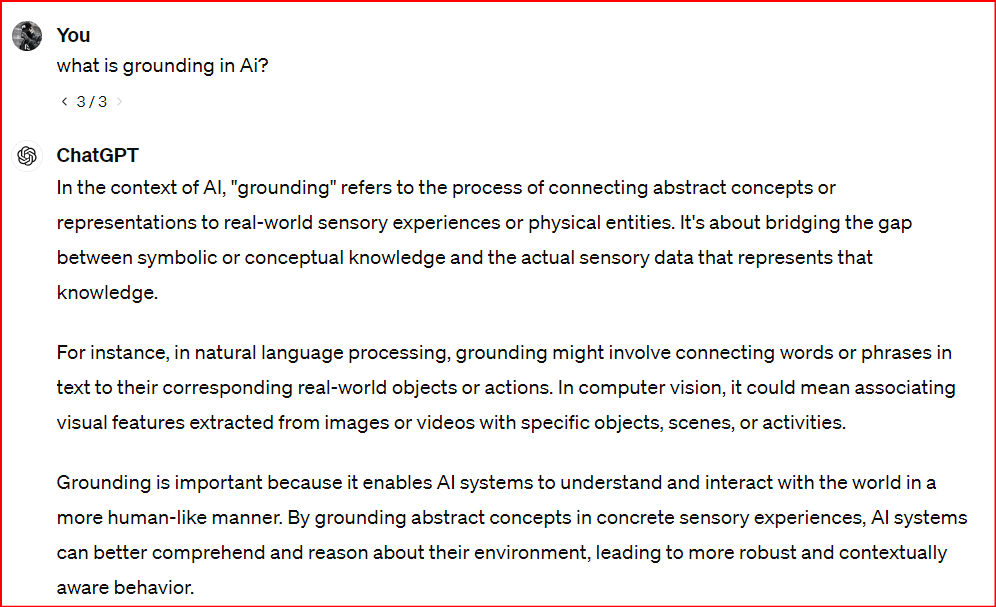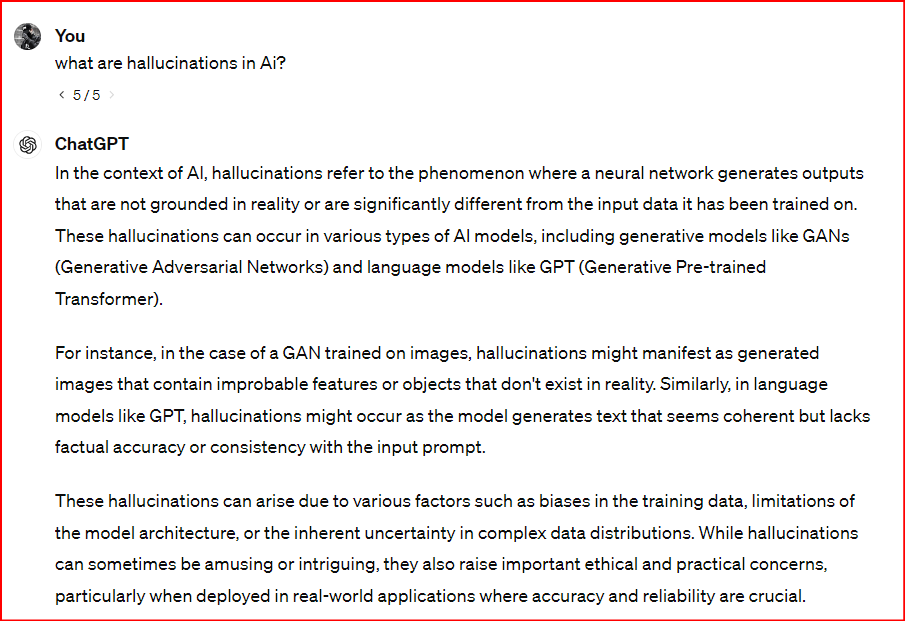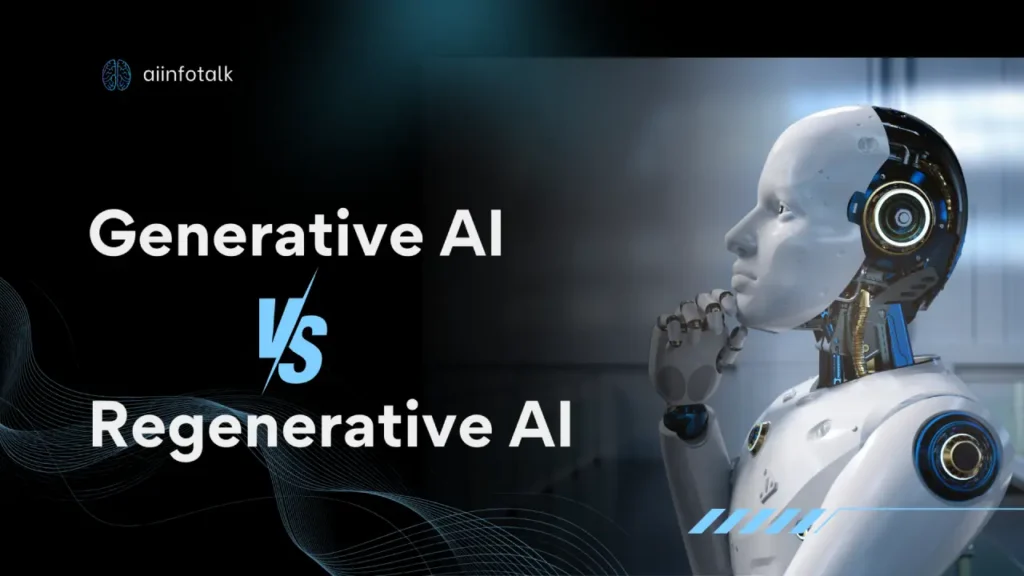Have you ever wondered what makes AI interesting? Well, let’s dive into the superb world of “Grounding and Hallucinations” in AI. But don’t worry, we won’t get stuck in the technical terms.
First, did you find yourself confused by the weird responses of artificial intelligence (AI)? Don’t worry, you’re not alone. I’ve often found myself in this situation, which has motivated me to research the AI phenomena known as “hallucination.” In this article, I will reveal some amazing concepts, insights, and practical solutions for grounding and hallucinations in AI,
AI Hallucinations: It happens when AI gives wrong information that seems real. Incomplete data, trying too hard to remember information or insufficient AI training can cause AI Hallucinations.
Grounding AI: It’s like teaching an AI common sense using massive amounts of relevant data and giving clear guidelines. It’s like giving AI a map and saying, “Here you go, buddy, now you won’t get lost.”
What Are Grounding and Hallucinations in AI?
First things first, let’s talk about grounding. Grounding in AI is connecting ideas or symbols to the real world. It enables AI systems to understand the query/ prompt or the meaning behind the data they encounter. So that, it can provide the most accurate information from reliable sources or a system of record.
When AI algorithms lack proper grounding, they may struggle to provide accurate information, which can be caused by a lack of simple instructions to the AI, insufficient training, or other problems.
Understanding Grounding in AI With Example
Grounding in AI is like giving a map to a lost traveler. It’s about connecting the deep concepts of artificial intelligence with practical uses, so the AI understands what’s going on. It’s like teaching a robot to identify a cat by showing it lots of pictures of cats.
For example, Imagine you’re teaching a robot to find a ball. You wouldn’t just say, “Hey robot, go get the ball.” You would need to ground such instructions by showing the robot what a ball looks like, where it’s located, and how to pick it up without accidentally crushing it. That’s grounding in action – making sure AI understands the world around it so it can carry out tasks effectively.
The Importance of Grounding
Grounding is essential for ensuring the reliability and effectiveness of AI applications. Imagine a doctor using AI to diagnose patients. Without grounding, the AI might create plenty of health-related terms and possibilities without truly understanding the patient’s unique situation. But with grounding, it learns from actual patient issues. So, when the doctor inputs symptoms, the AI considers real-world details like age, medical history, and lifestyle. This ensures the AI gives relevant and accurate advice, like having an experienced mentor guiding it.
Understanding Hallucinations in AI With Example
You know, working with AI models, I’ve learned the value of accuracy. An LLMs sometimes gets confused or makes mistakes, creating false perceptions known as hallucinations.
Hallucinations are like the brain playing tricks on a computer. Sometimes, AI systems can generate weird images, sounds, or give wrong information that doesn’t match reality. Imagine I ask to chatbot about the capital of France and he replies, “The capital of France is pineapple!”. Lol. These AI hallucinations can lead to inaccurate or harmful outputs.
AI hallucination and inaccuracy can happen in images as well. Here’s a perfect example that was made with Adobe Ai Image generator (Arm not in the mirror frame):
The Causes of AI Hallucinations
Although machine learning is incredible, sometimes, AI can act a bit like it’s dreaming up things that aren’t there. Here’s why AI can sometimes hallucinate:
- Limited Data: First, if the AI doesn’t have enough good-quality information to learn from, it might start making things up based on what it knows, leading to hallucinations.
- Overconfidence: Some AI models can get overconfident and make stuff up when it’s unsure what to do. These hallucinations can cause problems, so it’s crucial to teach AI to stay grounded in reality, just like we do with people.
- Knowledge Drift: As the world changes over time, AI models may struggle to adapt, leading to gaps between the data they were trained on and the current reality, likely causing hallucinations.
- Overfitting during Training: It occurs when an AI tool gets so focused on remembering every little detail from its training. That may cause it to make mistakes when seeing fresh content because it “thinks” about the previous data too much.
- Confusing Inputs: When the information given to the AI is unclear, confusing inputs or incorrect data in AI can lead to errors. Without clear guidance, the AI may difficult to provide accurate or helpful information.
- Too Much Creativity: LLMs like OpenAI’s ChatGPT or Gemini are good at creating content. But if we don’t guide them correctly, they might fake stories or facts rather than provide us with the truth especially when they generate text.
How to Stop AI Hallucinations?
Source: Moveworks
- Real-World Knowledge Integration: Integrate real-world knowledge and experiences into the AI’s training process, enabling it to arrange in-context information and make more informed decisions based on helpful insights.
- Fine-Tuning Algorithms: Continuously refine and improve the AI’s algorithms to minimize errors and enhance its ability to differentiate between genuine patterns and hallucinations.
- Trusted Data Sources: Ensure that the AI is trained on high-quality and reliable sources of datasets from reputable sources, minimizing the risk of deformed or misleading information.
- Feedback Mechanisms: Establish mechanisms for collecting feedback from users or experts to identify and address any glitch of AI hallucinations promptly.
- Understanding the Task: Utilizing prompt engineering involves making clear and specific instructions to guide LLMs like OpenAI’s ChatGPT to understand the task at hand correctly.
Role of Data Quality in Grounding and Hallucinations
Impact of Data Quality on Grounding
Relevant and reliable data sources are essential for grounding AI. When accurate and detailed data trains AI systems, they can establish strong connections between symbols and real-world applications, enhancing their understanding, effectiveness, and decision-making abilities.
Data Quality and Hallucinations in AI
Poor data quality can increase the risk of hallucinations in AI. Unreliable, distorted, or incomplete information may introduce false connections or incorrect ideas into AI models, leading to hallucinations in AI. Therefore, proper grounding enhances the reliability of AI-generated content to minimize hallucinations and ensure accurate outputs.
Designing a Template for AI to Follow
Creating a template for AI to follow” means designing a framework or guideline that tells AI how to do its job. It’s like giving a recipe to a chef, telling them exactly what ingredients to use and how to combine them to make a delicious dish.
Giving a clear role and guidelines to AI offers an understanding of its purpose, lowering the chances of producing inaccurate results. By executing these steps, we establish a structured template for AI to function within, to reduce the risk of hallucinations.
Giving a specific Role and Direction to AI
Grounding AI demands giving it a specific role and direction. Prompt engineering provides exact instructions to the generative AI model, guiding its task execution effectively. With a defined role and direction, AI knows what tasks to focus on and how to approach them.
Reinforcement learning can further help when an algorithm learns to decide by exploring over time, similar to how humans learn from experience.
By providing clear roles and directions, we give AI a roadmap to follow, ensuring it works effectively and is less likely to generate inaccurate information or hallucinations.
The Future of Grounding and Hallucinations in AI
In the future of grounding and hallucinations in AI, “Advanced Algorithms” are leading the charge toward making AI more understandable. These algorithms act like very intelligent detectives, that can handle complicated situations and unexpected scenarios with more accuracy.
With “Explainable AI” this allows people to understand how it decides by explaining its logic. This not only helps us trust AI more but also opens up amazing possibilities for AI to help us in ways we never imagined.
Conclusion
Grounding and hallucinations are critical concepts in AI, but it is crucial for ensuring the reliability and effectiveness of generative models. Techniques such as grounding, fine-tuning algorithms, and trusted data sources play a vital role in reducing these issues.
It’s crucial to continue exploring creative approaches to minimize these challenges as AI technology continues to advance.
What’s your experience with using AI tools in your everyday life, and how do you think grounding could make them even better? Share your thoughts in the comments below!
Also read: Is Candy Ai Safe or a Scam?
FAQs
How Often Does ChatGPT Hallucinate?
ChatGPT doesn't hallucinate in the way humans do. It generates responses based on patterns in the data it was trained on. However, it might generate irrelevant responses if the input is unclear. So, the frequency of "hallucinations" depends on the accuracy of the input it receives.
Is AI Hallucination Problem Fixable?
Yes, the "Hallucination" problem in AI can be improved, but not completely fixed. AI models like ChatGPT generate responses based on data patterns, so they may usually produce unexpected or nonsense outputs. Ongoing advancements in training data, algorithms, and error detection help reduce these issues, but complete fixes remain a challenge.





